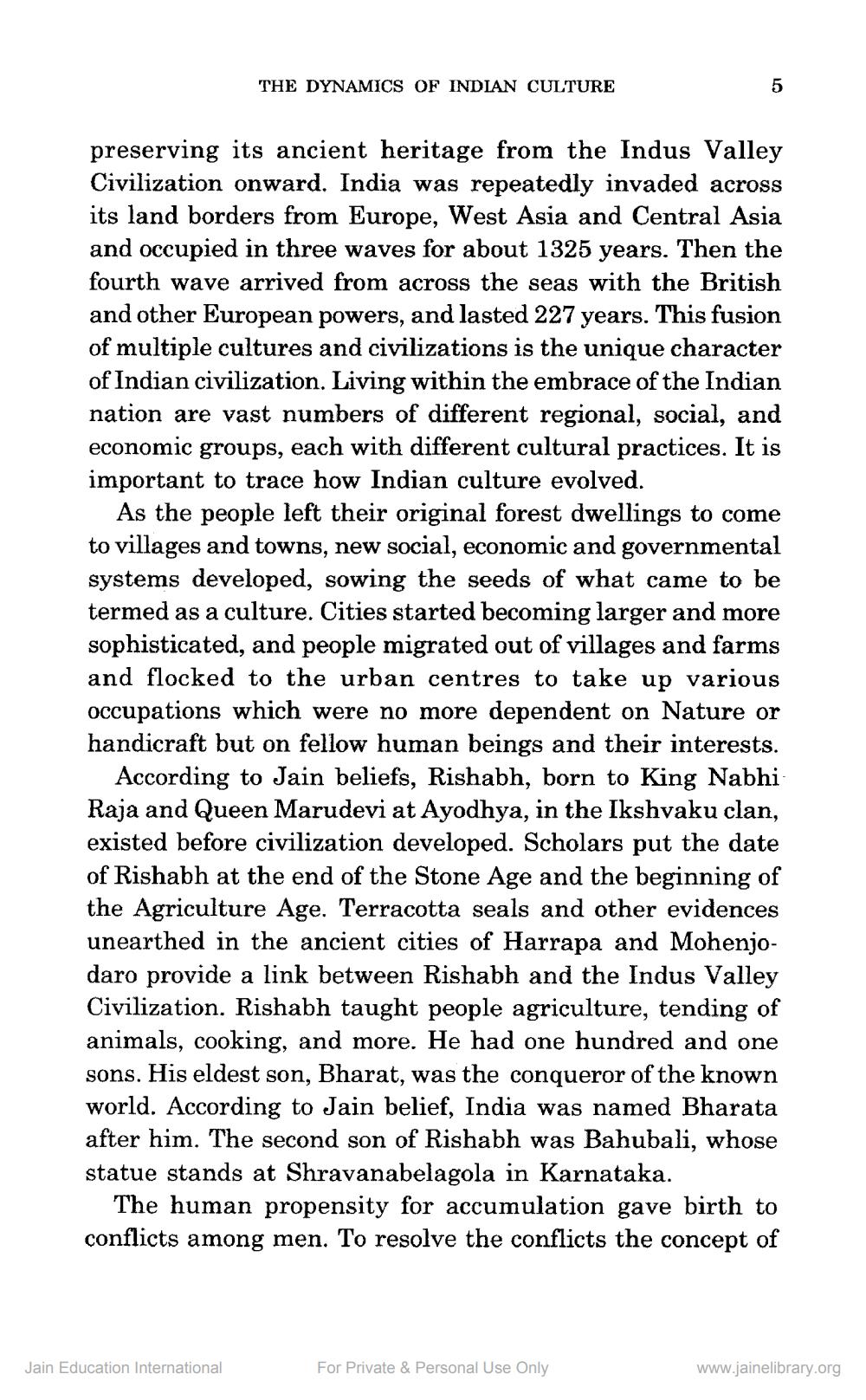________________
THE DYNAMICS OF INDIAN CULTURE
preserving its ancient heritage from the Indus Valley Civilization onward. India was repeatedly invaded across its land borders from Europe, West Asia and Central Asia and occupied in three waves for about 1325 years. Then the fourth wave arrived from across the seas with the British and other European powers, and lasted 227 years. This fusion of multiple cultures and civilizations is the unique character of Indian civilization. Living within the embrace of the Indian nation are vast numbers of different regional, social, and economic groups, each with different cultural practices. It is important to trace how Indian culture evolved.
As the people left their original forest dwellings to come to villages and towns, new social, economic and governmental systems developed, sowing the seeds of what came to be termed as a culture. Cities started becoming larger and more sophisticated, and people migrated out of villages and farms and flocked to the urban centres to take up various occupations which were no more dependent on Nature or handicraft but on fellow human beings and their interests.
According to Jain beliefs, Rishabh, born to King Nabhi Raja and Queen Marudevi at Ayodhya, in the Ikshvaku clan, existed before civilization developed. Scholars put the date of Rishabh at the end of the Stone Age and the beginning of the Agriculture Age. Terracotta seals and other evidences unearthed in the ancient cities of Harrapa and Mohenjodaro provide a link between Rishabh and the Indus Valley Civilization. Rishabh taught people agriculture, tending of animals, cooking, and more. He had one hundred and one sons. His eldest son, Bharat, was the conqueror of the known world. According to Jain belief, India was named Bharata after him. The second son of Rishabh was Bahubali, whose statue stands at Shravanabelagola in Karnataka.
The human propensity for accumulation gave birth to conflicts among men. To resolve the conflicts the concept of
Jain Education International
For Private & Personal Use Only
www.jainelibrary.org




